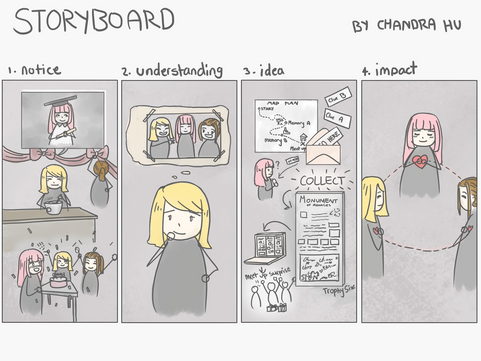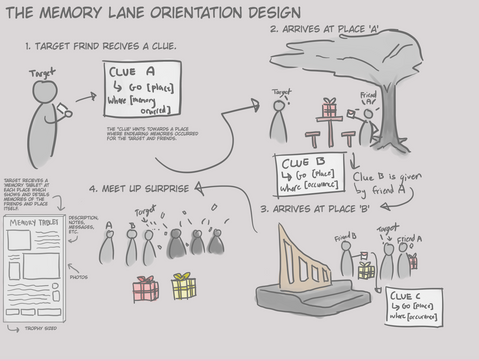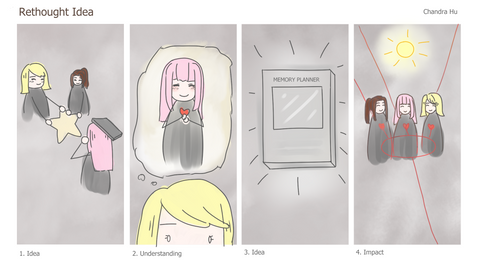Prototyping MR with Pop & Marvel
- Chandra Hu

- Sep 3, 2020
- 3 min read
Updated: Sep 3, 2020
For week 4, I wanted to try out prototyping my own VR or AR experience as inspiration from this week's lecture on the different prototyping software available. Since the higher in-depth VR prototype software is incompatible with my current resources, I'll be using the lower fidelity app-prototyping tool - Marvel web-prototyping service and the iOS app Pop by Marvel.
To start with this, I have my original idea the Memory Lane Design that was later reiterated to be an app design with Marvel. We had to use storyboards to exercise our empathy with the target user and think of ideas.
Marvel as a Prototyping Tool
This Marvel prototype is of a gift-giving-experience (app) that I did for Gen-Ed class, redesigned from the Memory Tablet to create the app prototype.

The Marvel prototype turned out decently despite my trouble designing with their restrictive but easy-template tools. To adapt this to my Mixed Reality classes, I tried to redesign this so that it incorporates AR into its experience. I relied on the interaction design processes to help with the redesigning processes, asking myself what it does, the feeling and the learning it has.

I attempted to use Pop to create this prototype. While I used Pop on my Ipad, I found that the app was extremely tricky to use because its basic tools did not allow for much freedom. I could not add transparent PNGs to simulate an AR prototype app experience. This was a step down from the web browser service and it would've been easier for me to use a regular illustration app. Although, its sketch cropping tool was easy and useful to bring my paper sketches onto my iPad. I Switched from real photos to the sketches after three frames.

AR Ideas and Interactive Design Processes
My idea primarily tries to encourage outside activity to revisit memorable places for the target users. I established their needs through understanding their point of view and came with the action statement - how can we make the experience a life-lasting? This AR redesign uses AR assets or AR messages to decorate memorable places, which any users can revisit or visit other decorated sites and memories. There is also gamification to encourage this where users can earn points for designing and visiting places. Your personal memories can be stored in a project and sent to friends to celebrate memorable events in a more exciting way. As an AR design, the system is not able to be completely immersive which may take away the conscious feeling of presence between the virtual and physical. However, this can be made up with its other features such as responsive AR assets and gamification. Gamified physical activity can encourage better wellbeing for those who are usually unmotivated to go out. This can be especially impacting on young people.

Image retrieved from Billinghurst M., (2020)
Interaction design processes depict development and repeated iteration to create a final product (2020). I find this to be true especially with the feedback received which aids the evaluation stage and leads to iterated improvement of the idea.
Overall
I learnt a lot about low-fidility prototyping, and the potential influences that AR design can have. The interaction design process is also a quick way to break down designing for AR and VR while greatly aiding my thinking processes during the redesign of it.
Reference:
Billinghurst, M. (2020). Designing Mixed Realities. Prototyping Mixed Realities II











Comments